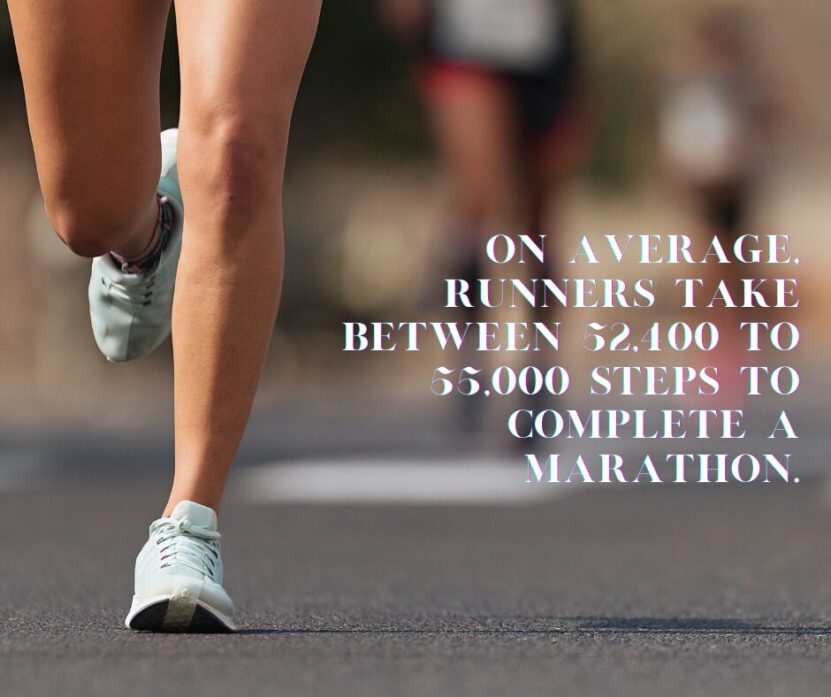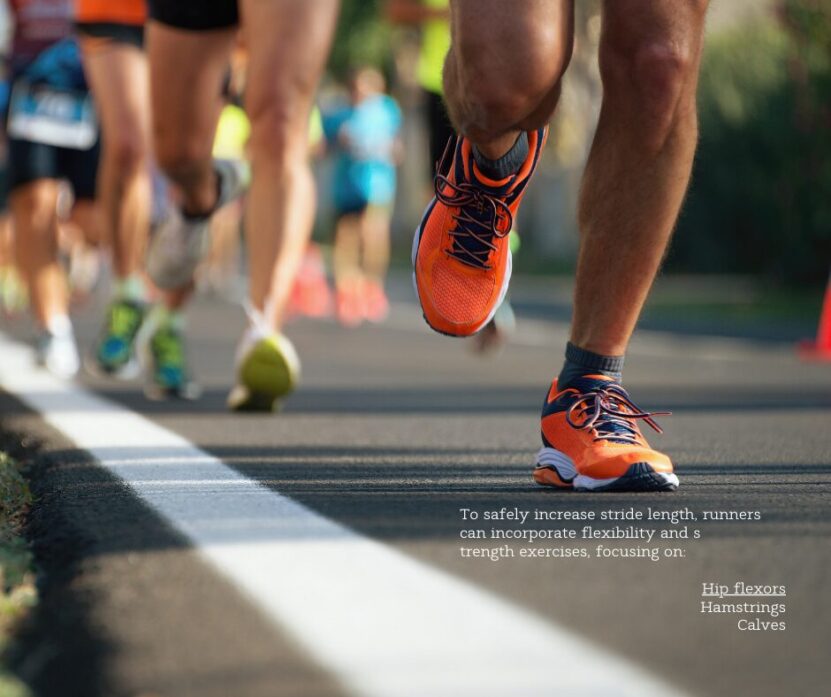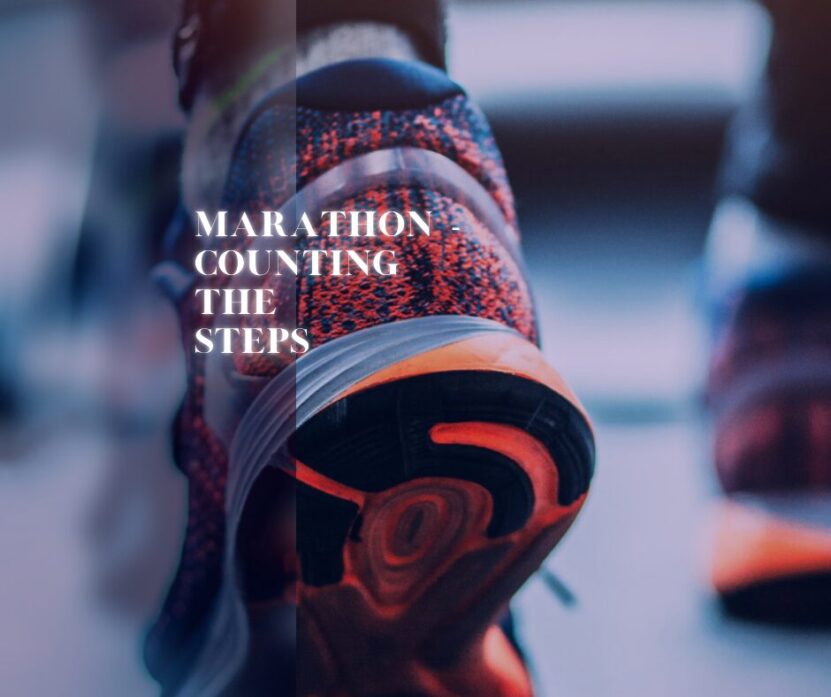Step counts in marathons are crucial for runners aiming to optimize performance.
Many runners are curious about the number of steps taken during a marathon, which can influence training and race strategy.
Of course, it needs to be said that this cannot be calculated precisely.
Nevertheless, we will try to provide the most accurate answer to this question.
Key Takeaways:
- Runners take between 52,400 to 55,000 steps to complete a marathon.
- Completing a half marathon generally requires between 23,580 to 28,820 steps, depending on stride length and running technique.
- Factors influencing these metrics include height, age, sex, and running speed.
Average Steps in a Marathon

On average, runners take between 52,400 to 55,000 steps to complete a marathon. This estimate varies based on individual stride length.
For example, the average stride length for men is about 2.5 feet, while for women it is around 2.2 feet.
Elite runners, with longer stride lengths and efficient running techniques, may take fewer steps. Calculating steps involves dividing the marathon distance by stride length.
For instance, a runner with a 2.5-foot stride length would take approximately 52,336 steps (138,435 feet/2.5 feet).
Elite runners, with strides averaging 3 feet or more, take fewer steps, showcasing the importance of stride efficiency.
Completing a half-marathon generally requires between 23,580 to 28,820 steps, depending on:
- Stride length
- Running technique
Runners with longer strides take fewer steps, while those with shorter strides take more.
For example, a runner with a stride length of 2.5 feet would take approximately 26,230 steps (69,168 feet/2.5 feet) to finish a half-marathon.
Variability in stride length and efficiency accounts for the range in step counts.
Step Length and Stride Length
Step length and stride length are key metrics for runners.
Step length is the distance between the heel of one foot and the heel of the other foot when walking or running.
Stride length is the distance covered in one full cycle of motion, from the initial contact of one foot to the next contact of the same foot.
Factors influencing these metrics include height, age, sex, and running speed.
Taller individuals tend to have longer strides, while age can affect flexibility and stride length.
Men generally have longer strides than women due to physiological differences.
Tailoring training to individual characteristics ensures better performance and reduces the risk of injury.
Factors Influencing Step Count

Now let us take a look at factors that have an influence on the step count:
Stride Length: Height and leg length significantly impact stride length. Taller runners with longer legs mostly cover more ground with each step.
To safely increase stride length, runners can incorporate flexibility and strength exercises, focusing on:
- Hip flexors
- Hamstrings
- Calves
Proper warm-up and gradual progression in training help avoid injuries.
Terrain: Running on flat terrain typically results in consistent step counts. Hilly or uneven terrains require:
- Shorter
- Quicker steps
- Increasing overall step count
Training on various terrains prepares runners for different race conditions, enhancing adaptability and endurance.
Running Efficiency: Efficient running form and technique reduce unnecessary movements, conserving energy and improving performance.
Key elements include maintaining an upright posture, relaxed shoulders, and a slight forward lean.
Drills and professional coaching can enhance running form, leading to better efficiency.
Tracking step count and stride efficiency can be enhanced by recording training sessions. Creating personal training videos allows runners to analyze their technique, identify inefficiencies, and make adjustments for better performance. A video editing tool helps runners compile and review footage, making it easier to spot areas for improvement. By studying their form, pace, and foot placement, runners can fine-tune their mechanics and optimize step count for better endurance and efficiency.
Pacing: Different paces impact step turnover and overall step count.
Faster paces often result in longer strides and fewer steps, while slower paces may increase step count.
Monitoring and adjusting pace during training helps runners find their optimal balance between speed and efficiency.
The Bottom Line
Step count for marathons and half marathons is vital for runners.
Factors like stride length, running efficiency, and terrain significantly impact step counts.
Utilizing step count data helps runners optimize their training and performance, setting them up for success on race day.

